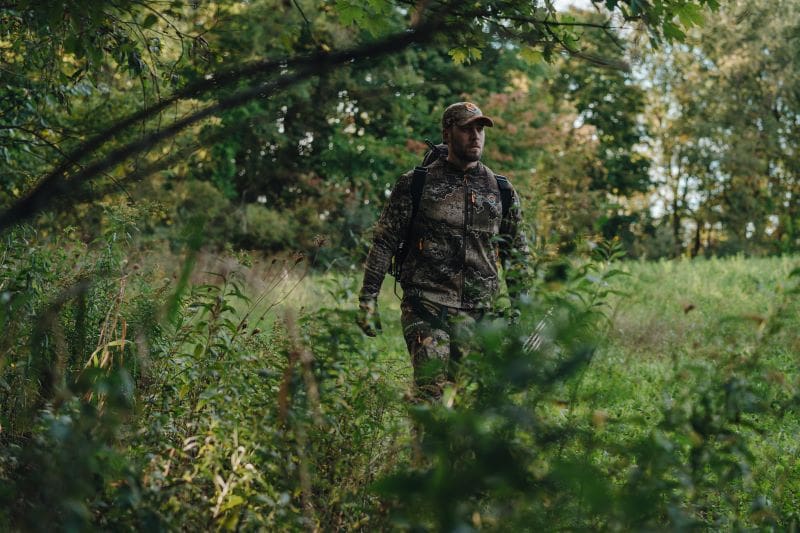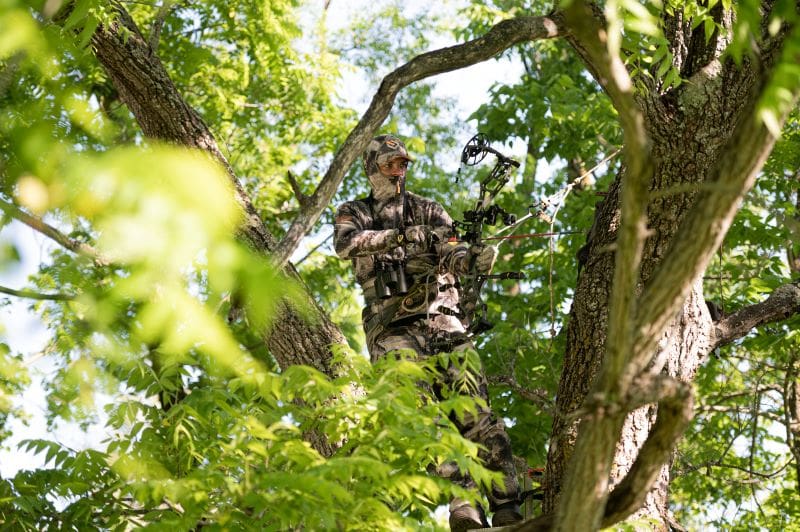As summer progresses, deer behavior undergoes significant shifts. Understanding and adapting to these evolving patterns is crucial for hunters aiming to maximize their opportunities with a target buck before these changes occur.
Many hunters agree there’s nothing more rewarding than tracking a “target buck” on camera all summer and then executing a successful early-season harvest. A few summers ago, I had one particular buck that became a regular on my Stealth Cam cellular cameras. After weeks of receiving nearly a hundred photos of this mature southern Missouri buck, I found myself completely obsessed, eagerly anticipating every move he made. When archery season opened on September 15th, I was fully committed to pursuing this hit-list buck. Just over two weeks into the season, I was fortunate enough to have him present a broadside shot at twenty-one yards, making it the highlight of the season.
Understanding Summer Patterns
Bucks are primarily driven by the need to eat and replenish energy reserves during the summer. Their movements are often consistent, centered around feeding areas and water sources. Bucks are typically more predictable, establishing regular routines and staying within a limited range. Their summer behavior is primarily influenced by the availability of food and the need to build body mass, which is why many hunters use corn or other high-protein feeds to attract deer to their game camera sites. At the same time, many hunters rely on lush green food plots late in the summer to attract bachelor groups of bucks and create a great location to scout from a distance during late summer evenings.

Key Strategies for Success
- Scout with Purpose: Use trail cameras and scouting to monitor your target buck’s movements and preferences. Pay close attention to feeding patterns, bedding areas, and travel routes. By late summer, bucks often establish well-defined patterns that can provide valuable insights into their behavior. As with my buck, once you have established a target buck, put all your effort into whatever you do to get within shooting range as soon as the hunting season begins. Use your gathered information to identify prime locations for setting up stands or blinds, then make it happen.
- Optimize Food Sources: Bucks are highly focused on feeding in the summer. Don’t use these popular big buck areas for scouting only; ensure that food sources like clover plots, soybean fields, or supplemental feed stations (check local state regulations) are in optimal condition. Several weeks before the season, position your stands or blinds near these key areas to increase your chances of encountering the buck. Consider the wind direction and devise a plan to minimize scent detection before hunting. In fact, ONLY hunt these areas when conditions are ideal.
- Respect the Patterns: Avoid disrupting the area where your target buck is active. Frequent intrusion can alter their behavior and force them to change their patterns. Use minimal scent trails, and enter and exit your hunting spots quietly. When checking cameras or tending to a supplemental feed station, I treat myself as if I were hunting. Spraying down with a scent control spray and using proper wind direction in my favor is always my top priority. This respect for their routine will help maintain their predictable movements and increase your chances of success.
- Monitor Weather Conditions: Weather can influence deer activity. Hot summer temperatures can affect feeding times and behavior. One of the most effective and popular hunting methods during the early season is paying close attention to the weather. Many hunters use hunting apps such as HuntStand, Drury’s Deer Cast, Moultrie Mobile, Hunt Wise, and OnX to help monitor weather forecasts and adjust their hunting strategies accordingly. For instance, if a cold front arrives, it might prompt increased movement, making it a prime opportunity to hunt; by seeing the upcoming forecast days before, the hunters can plan their most optimal times to make the harvest.
- Prepare for Changes: As summer transitions into fall, deer behavior will shift significantly. Be prepared for changes in your target buck’s patterns as they focus on establishing dominance and seeking out does. This can be one of the most dreaded times for hunters pursuing one specific target buck. However, it doesn’t mean the chance of harvesting that buck is gone. Transition your strategy to accommodate these changes by shifting your focus to rut-related behaviors and emerging patterns. For example, when I see bachelor groups separated on my cameras, I soon revert to hunting stands that are near past rub lines or scrapes. Many times, bucks use the same general areas year after year. After groups have separated, it typically is within a couple of weeks, and rubs and scrapes begin popping up as the pre-rut begins.

Taking advantage of your target buck before summer patterns change involves careful planning, strategic scouting, and a deep understanding of their current behavior. By respecting their established patterns and optimizing your approach, you can significantly increase your chances of success. As summer gives way to fall, remain adaptable and ready to adjust your tactics to keep up with the evolving behavior of your target buck.

